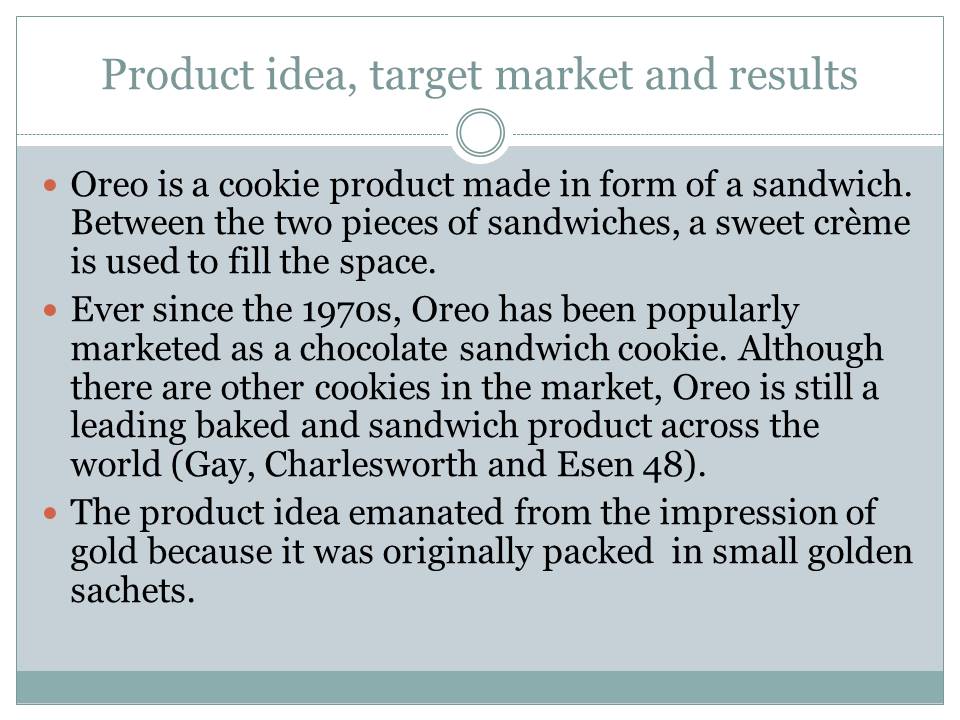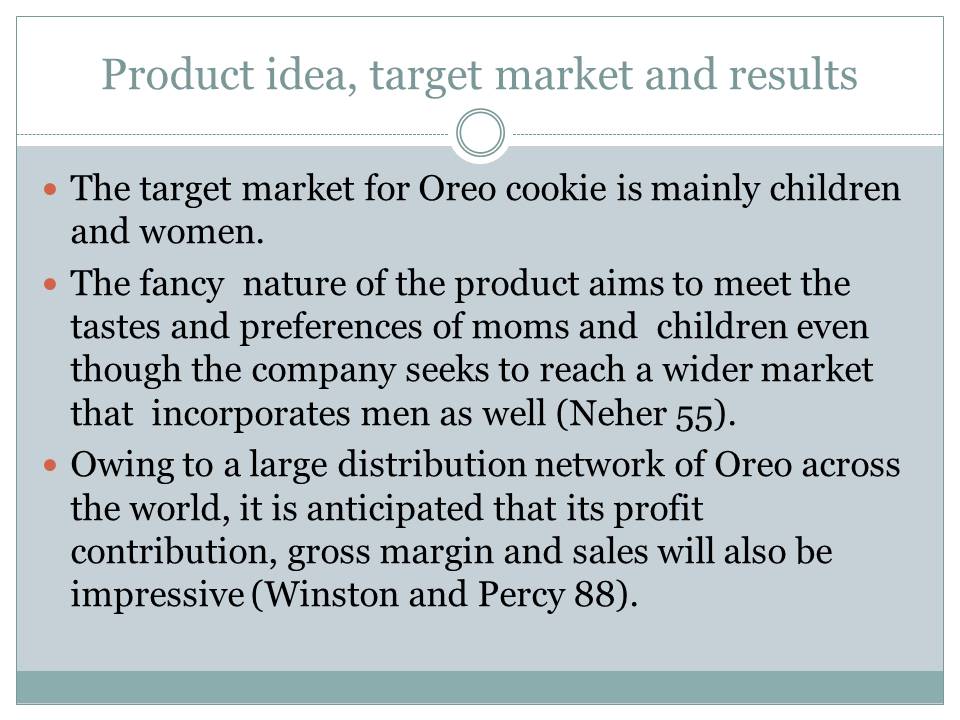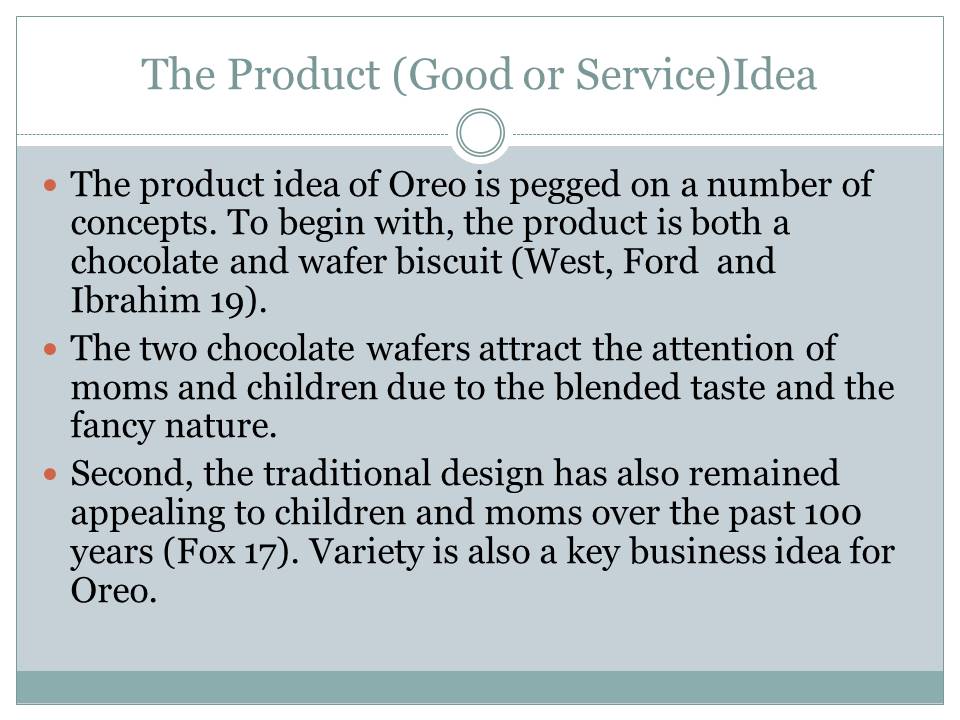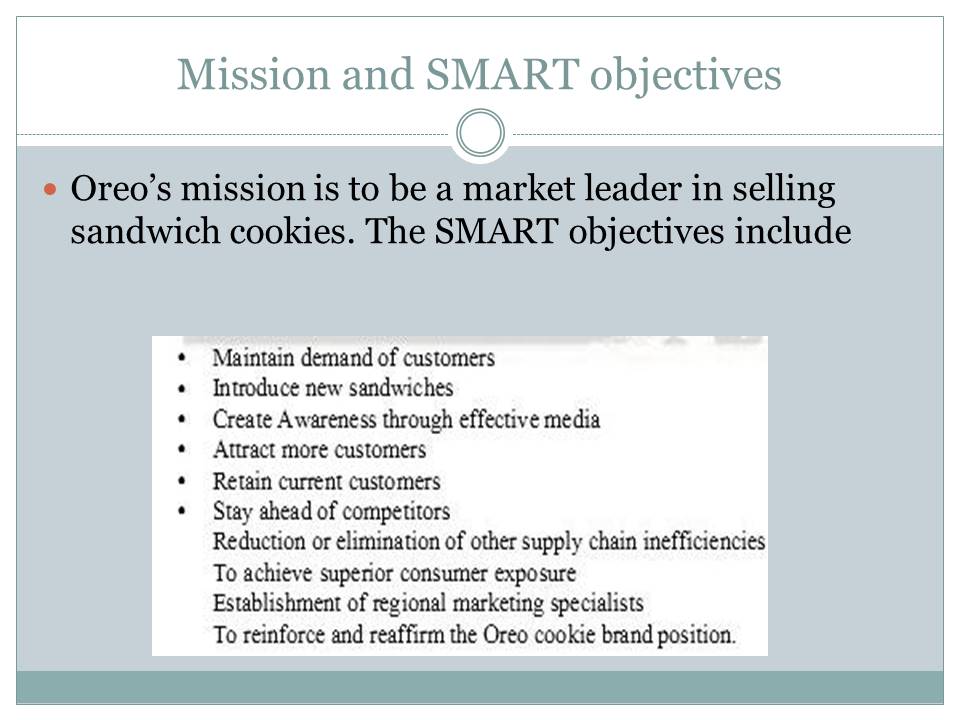Product idea, target market and results
Oreo is a cookie product made in form of a sandwich. Between the two pieces of sandwiches, a sweet crème is used to fill the space.
Ever since the 1970s, Oreo has been popularly marketed as a chocolate sandwich cookie. Although there are other cookies in the market, Oreo is still a leading baked and sandwich product across the world (Gay, Charlesworth and Esen 48).
The product idea emanated from the impression of gold because it was originally packed in small golden sachets.
This created a notion of value attached to the product. However, the packaging of Oreo has transformed over the years depending on the changing marketing needs (Shimp and Andrews 25).
The target market for Oreo cookie is mainly children and women.
The fancy nature of the product aims to meet the tastes and preferences of moms and children even though the company seeks to reach a wider market that incorporates men as well (Neher 55).
Owing to a large distribution network of Oreo across the world, it is anticipated that its profit contribution, gross margin and sales will also be impressive (Winston and Percy 88).
In addition, the population of children and women is expected to continue to grow beyond that of men. A wide targeted market will definitely continue to boost the sales volume of the product (Lamb, Hair and McDaniel 43).


The Product (Good or Service)Idea
The product idea of Oreo is pegged on a number of concepts. To begin with, the product is both a chocolate and wafer biscuit (West, Ford and Ibrahim 19).
The two chocolate wafers attract the attention of moms and children due to the blended taste and the fancy nature.
Second, the traditional design has also remained appealing to children and moms over the past 100 years (Fox 17). Variety is also a key business idea for Oreo.
The product is sold in different shapes such as double stuf Oreo, big stuf Oreo, football Oreo and mini Oreo. It is also served in different flavors such as Blueberry Ice Cream, lemon ice, Green tea and Oreo DQ Blizzard Crème Oreo (Pride, Hughes and Kapoor 83).

Mission and SMART objectives
Oreo’s mission is to be a market leader in selling sandwich cookies. The SMART objectives include.

Value proposition
Oreo presents a number of products to the targeted users. First, it is nutritious due to the chocolate laced between the two wafers.
Second, Oreo acts as a rapid source of energy to its consumers (Diaz 30).
When compared to other brands in the market, it is generally more affordable and therefore pocket-friendly to the targeted market.

References
Diaz, Ann-Christine. “Oreo finds way into flow of pop culture, current events with 100-day-long campaign.” Advertising Age,83.32 (2012): 30-31.
Fox, Maggie. “Planning to Be Spontaneous.” Marketing, 118.6 (2013): 16-17.
Gay, Richard, Alan Charlesworth and Rita Esen. Online Marketing A Customer-Led Approach. New York: Oxford University Press, 2007. Print.
Lamb, Charles, Joe Hair and Carl McDaniel. Essentials of Marketing. Mason, OH: South Western Cengage Learning, 2012. Print.
Lamb, Charles. Marketing. Toronto: Nelson Education Ltd, 2012. Print.
Neher, Krista. Visual Social Marketing for Dummies. Hoboken, NJ: John Wiley & Sons, 2010. Print.
Pride,William, Robert Hughes and Jack Kapoor. Foundations of Business. Stamford, CT: Cengage Learning,. 2015. Print.
Shimp, Terencem and Craig Andrews. Advertising Promotion and Other Aspects of Integrated Marketing Communications. Mason, OH: South Western Cengage Learning, 2013. Print.
West, Douglas, John Ford and Essam Ibrahim. Strategic Marketing: Creating Competitive Advantage. Oxford: Oxford University press, 2010. Print.
Winston, William, and Larry Percy. Marketing Research That Pays Off. New York: Haworth Press, 2014. Print.